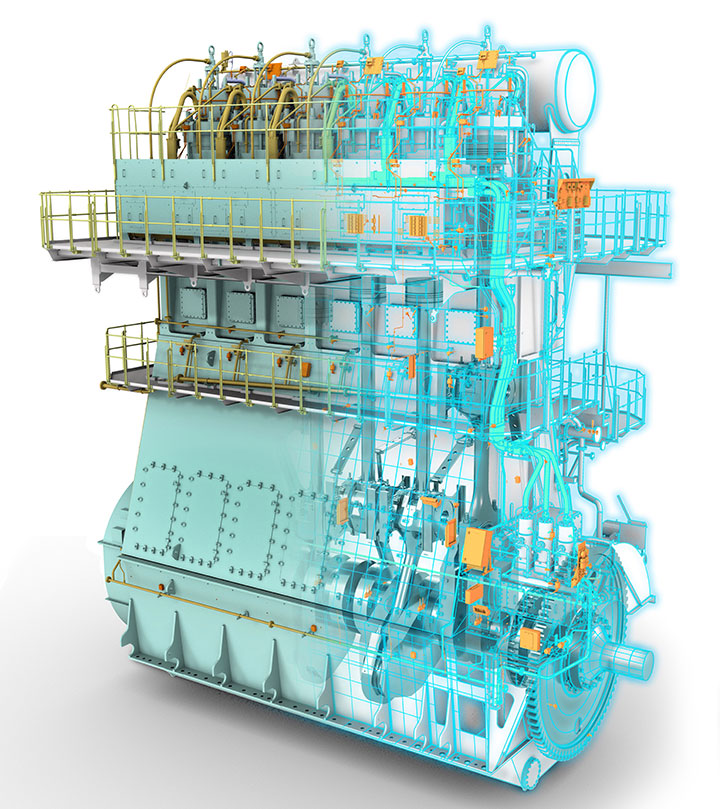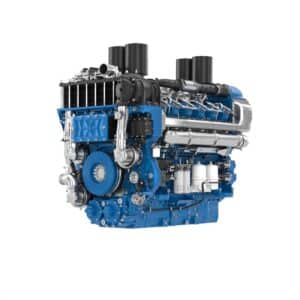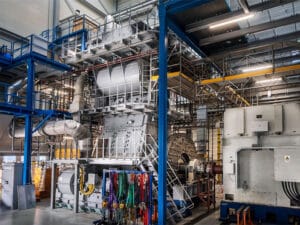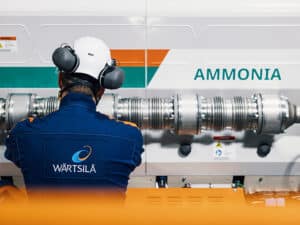
NYK Line opts for WinGD hybrid solutions for car carrier quartet
Written by Nick Blenkey
Hybrid energy systems offer one of the most cost-effective solutions for deep-sea vessels to meet future environmental , says WinGD.
Engine developer WinGD is making its debut in the hybrid sector. Four newbuild car carriers ordered by Japan’s NYK Line will feature an integrated hybrid power solution that will help dramatically cut their GHG emissions. The pure car and truck carriers (PCTC) will run on LNG, with power being provided by WinGD’s 7X62DF-2.1 two-stroke engines coupled with shaft generators, DC-links and battery systems.
Based on its in-depth knowledge of the main engine’s performance WinGD has optimized spinning reserves, peak shaving, and energy flow to run the main engine constantly at its sweet spot while avoiding inefficient generator loads. WinGD will be responsible for the system integration and system-level energy management, through its new Hybrid Control System.
Combined with other ship design enhancements, the LNG-battery configuration is expected to cut overall CO2 equivalent emissions by around 40% compared to conventionally powered vessels operating on heavy fuel oil, taking them beyond IMO’s 2030 target for cutting greenhouse gas (GHG) emissions.
“Battery hybrid technology improves fuel efficiency and emissions by mitigating main engine and electrical generator load fluctuations,” said Keita Fukunaga, deputy manager/ship design team/technical group at NYK Line. “This project is an important step in our plan to replace current vessels to newly built LNG-fueled PCTCs, reducing the fleet’s carbon intensity by 50% by 2050. We are delighted to contract with WinGD to integrate this innovative power and propulsion arrangement.”

“An appropriately controlled hybrid energy system is emerging as one of the most cost-effective solutions for deep-sea vessels to meet future environmental targets, combining the high efficiency of low-speed two-stroke engines with optimally sized electric drives, machines, and energy storage units,” said Steven Goranov, program portfolio manager digital & hybrid at WinGD. “This important landmark showcases WinGD’s core engine development expertise and the extensive investments we have been making to understanding how to optimise the operational characteristics of integrated hybrid systems.”
WinGD believes that the low-speed two-stroke engine must remain at the heart of any hybrid energy configuration for deep-sea merchant vessels. With its step into system integration, the company brings its expertise to the holistic design of power arrangements that can incorporate batteries, shore power interfaces, solar or wind power generation, fuel cells, frequency converters and energy management systems.
WinGD says that peak shaving is just one example of the operating modes that hybrid power systems can deploy to make deep-sea shipping more efficient. It says that as low-speed engines are inherently more efficient than four-stroke engines, the carefully managed use of the main engine and electrical energy management aided by batteries can optimize the loading of auxiliary engines. Other modes include efficient port maneuvers and bow thruster operation, and the use of batteries rather than auxiliaries to provide spinning reserve in case of the need for emergency power.
The NYK newbuilds will be built by China Merchants JinLing Shipyard (Nanjing) for delivery in 2023. They are expected to be assigned to transport vehicles mainly between Europe and the Middle East.





